I don’t have a crystal ball to see what the rest of 2022 has in store for us.
But I do have plenty of data.
There’s so much that’s changed in the last two years — how can you build (and execute) a solid strategy that’s agile enough to adjust to how work is changing in 2022 and beyond? I wanted to know, too. So I sat down with Mark Kilens, VP of Content and Community, for a deep dive into our top 10 predictions and best practices that revenue teams should build their strategies around 👇
1. How We Work Is Changing
ICYMI, the way we work is completely different now.
According to Drift’s 2021 State of Conversational Sales, 65% of sellers say their sales productivity increased, which makes sense — there’s less travel and in-office distractions, so there’s more time to focus. It’s not like someone’s going to pop by your cube and see what’s new or invite you to grab a coffee.
For marketers, though, it’s been a mix. About half said remote work has made them more flexible, but with that, 41% had to onboard new tools and 39% had to onboard new talent.
How to deal with this? It all comes down to flexibility.
That means starting with the right technology that supports collaboration, creating a hiring strategy that fits the new way to work, and creating achievable, realistic goals for employees to set them up for success.
Psst. Want to dig into the data around even more sales trends? Download your copy of the 2021 State of Conversational Sales here.
2. How We Engage Is Changing
It’s not just how we work that’s changing — it’s how our buyers buy, too.
Buyers now expect B2B companies to act a lot more like B2C companies. This shows up in a 26% increase in demand for personalized buying experiences and a whopping 64% increase in demand for immediate responses online.
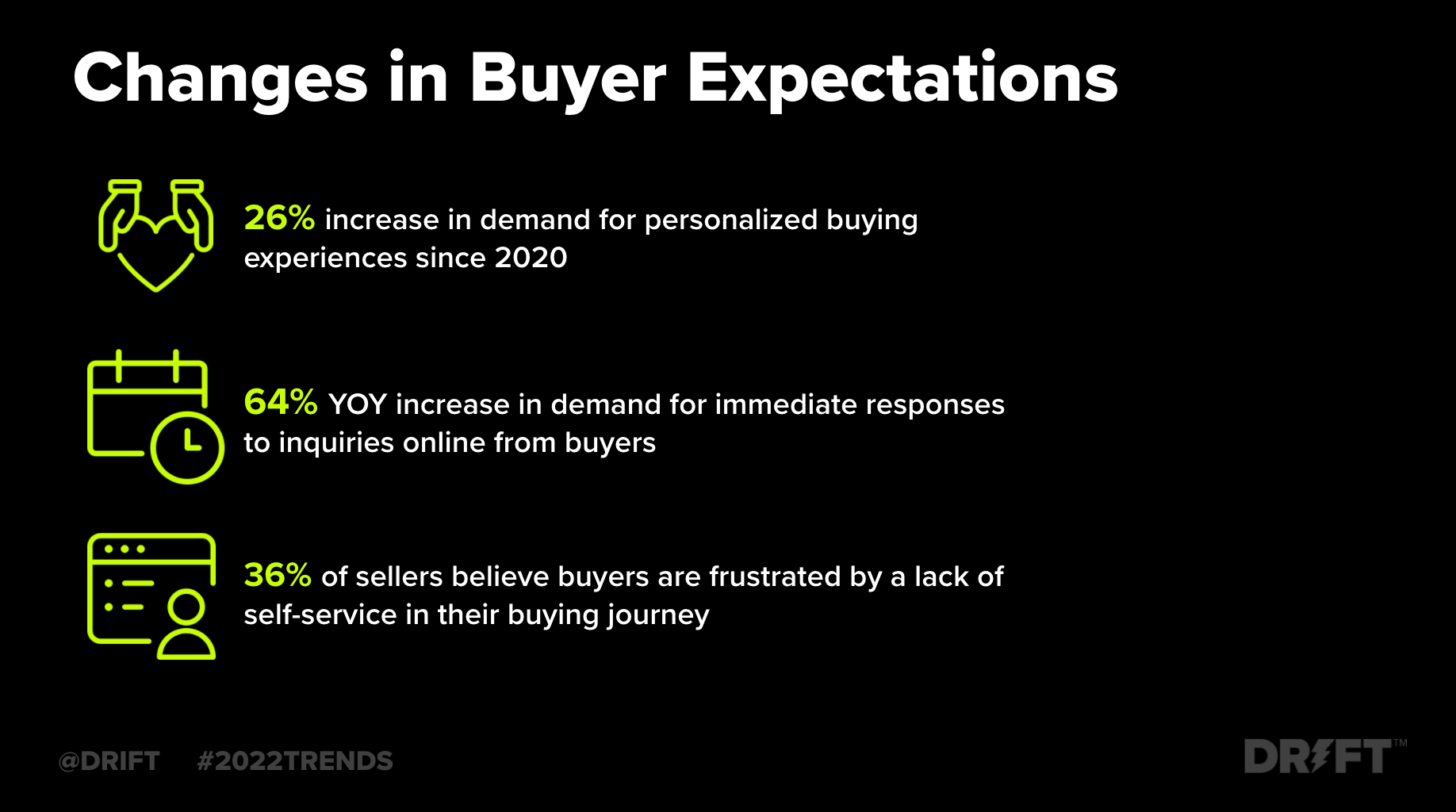
People want an answer when they want an answer, and that means now.
Sales teams really feel the heat of this — 36% say that their audience is frustrated by the lack of self-service. That means your website has never been more important.
You need to be able to identify your visitors and greet them with a personalized, red carpet experience:
- Using chat to deliver lightning-fast responses
- Simplifying navigation menus so it’s easy for customers to find what they need
- Creating buyer-centric user experiences
It’s one of our mantras here at Drift: Whoever makes it easiest to buy wins.
3. It’s Time to Treat People Like People
People are people, not lines on a spreadsheet.
“But that doesn’t scale!”
A great customer experience > scale every time.
That’s what’s going to set your company up for success much more quickly than churning through leads, because…
- 20% of buyers are frustrated with accessing basic business information
- 25% of buyers are frustrated with website navigation
- 27% of buyers are frustrated with forms
- 47% of sellers say that buyers are frustrated by a lack of personalized website experiences and resources
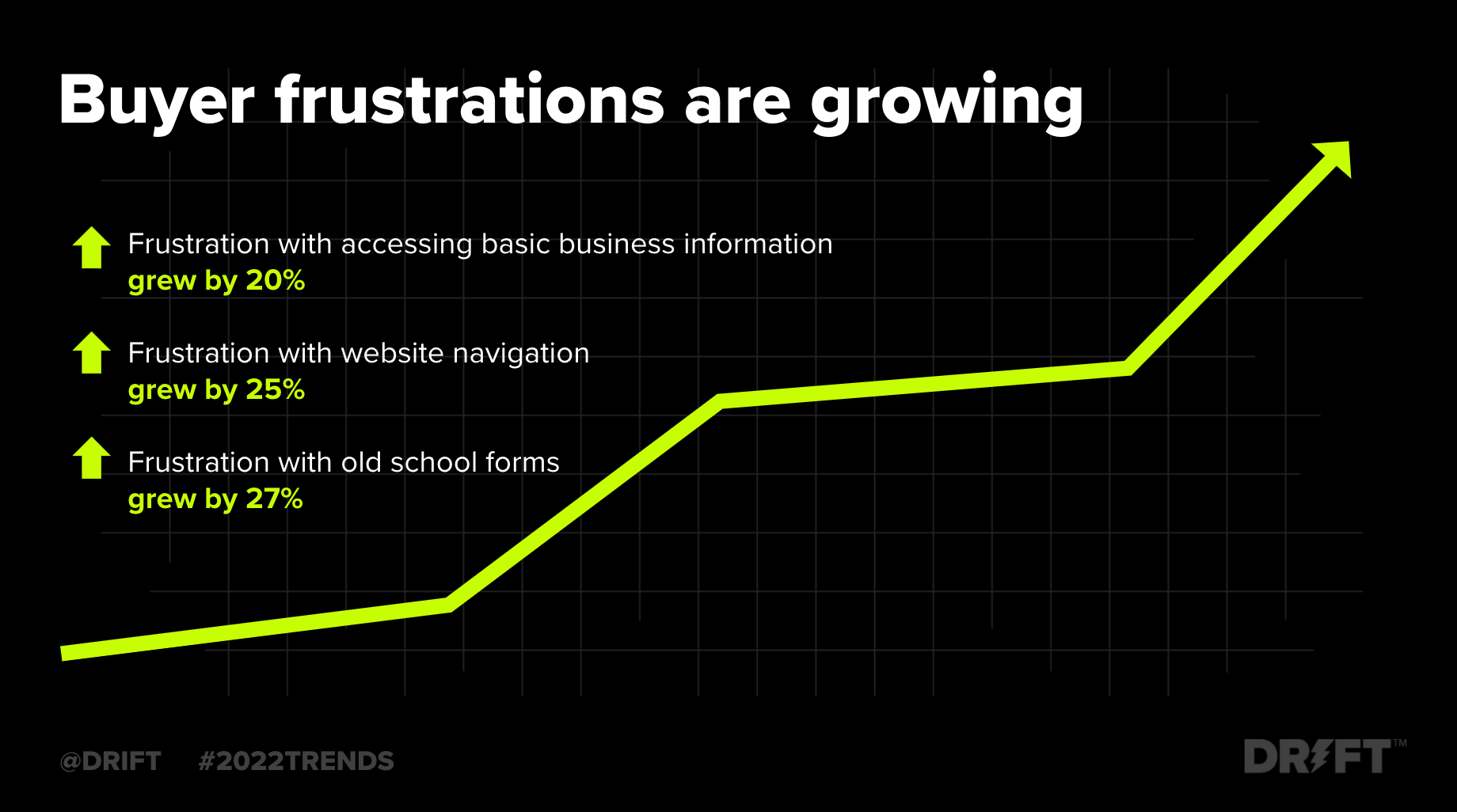
If you don’t deliver a great experience, your buyers are just going to try somewhere else.
To do this, you’ll need to align your sales and marketing teams at the very top to build an integrated campaign approach that meets the needs of buyers and sellers.
4. Buyers Want DIY Journeys
Your sales team interacts with buyers for only 5% of their buyer’s journey.

So what are you going to do about the other 95%?
You’ve got prospects coming to your website, attending events, and reading your content. How can you make those experiences not just better, but more cohesive? To deliver on buyer expectations, you have to:
- Identify the people coming to your website
- Tighten up your target account universe to deliver the best experiences to the most important people in your audience
- Use intent signals to understand why someone visited your website in the first place and build that personalized experience
Whether or not your buyer talks to your sales team, they’re still a buyer. They just need to choose you.
5. Static Channels Fall Short for Marketers
For a long time, marketers were obsessed with performance marketing.
But it’s time to bring your brand to life.
That means focusing on dynamic customer intelligence rather than static channels. According to the 2021 State of Conversational Marketing Report, more than ever, marketers are using real-time engagement to move customers along the funnel:
- 47% increase in live chat usage
- 36% decrease in email usage
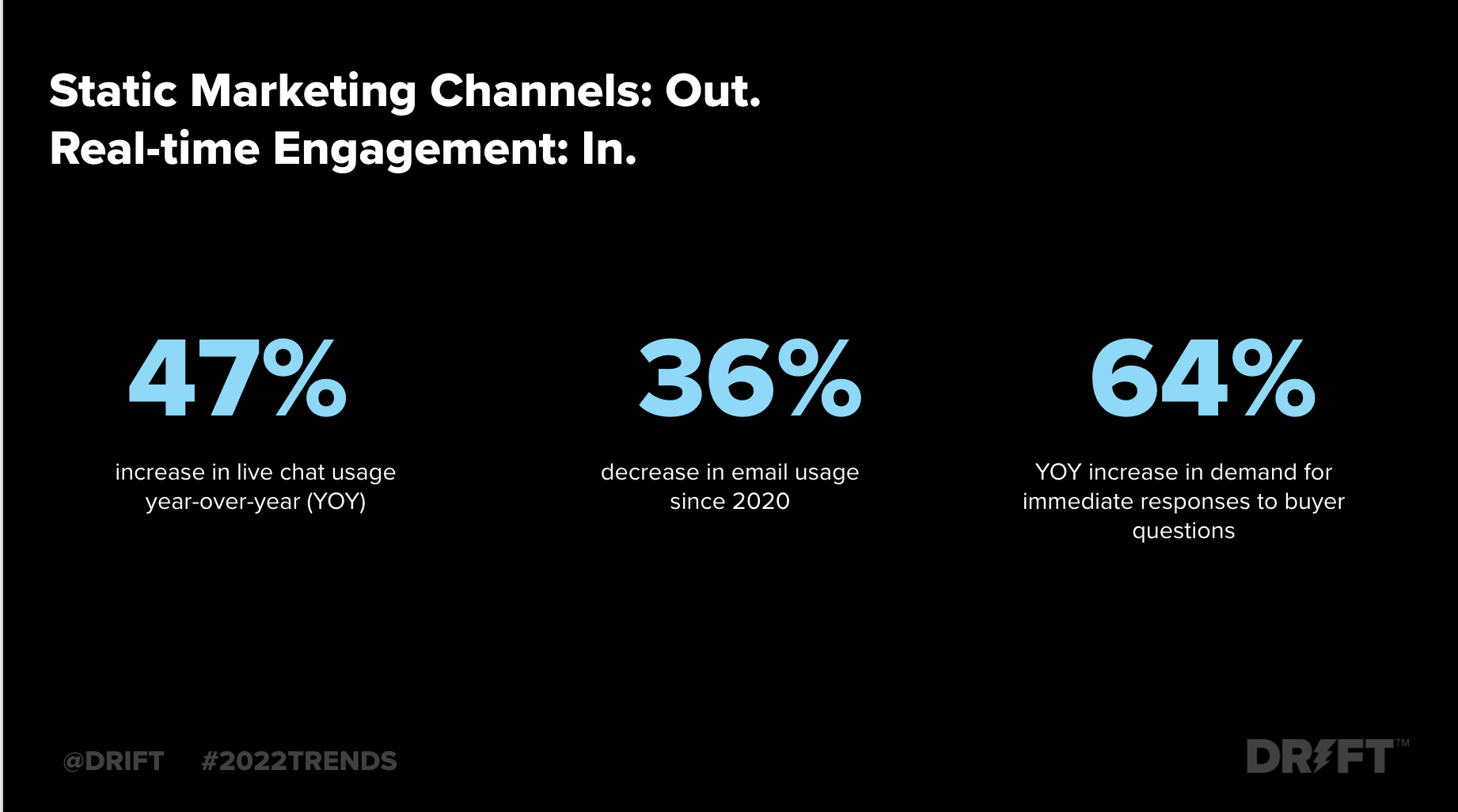
Marketers are becoming more agile — creating authentic, problem-solving messaging in real-time in dynamic channels like Slack, chat, and other messaging systems that drive connection and community.
6. Sellers Embrace Digital, But Need to Focus
Digital is here to stay.
Your customers won’t have a single model of engagement any longer. Some will be back in the office. Some will be 100% remote. Some will have a mix of the two.
The last two years, we’ve seen sellers embrace digital tools — but all of this change makes it difficult to focus. That’s true for marketers, too.

The biggest opportunity this year isn’t a hot new channel or tactic. It’s focus.
Marketers are distracted. Buyers are distracted. Sellers are distracted.
It’s up to you to cut through that noise.
What would it look like if marketers actually focused on specific audiences and sellers actually spent time managing their most valuable accounts? 59% of sellers frequently spend time following up just to schedule sales meetings with buyers. Instead of having sellers update CRM records, transcribe notes, or copy and paste links to call recordings, they should spend that time building relationships.
Virtual Selling Assistants are AI-powered automated chatbots that talk to your site visitors like your best reps at all hours of the day, in multiple languages, helping you build the qualified pipeline you need to hit your number 🤖
7. 2022 Is All About Quality > Productivity
You may be busier than ever, but are you productive?
With focus comes an emphasis on quality, rather than quantity.
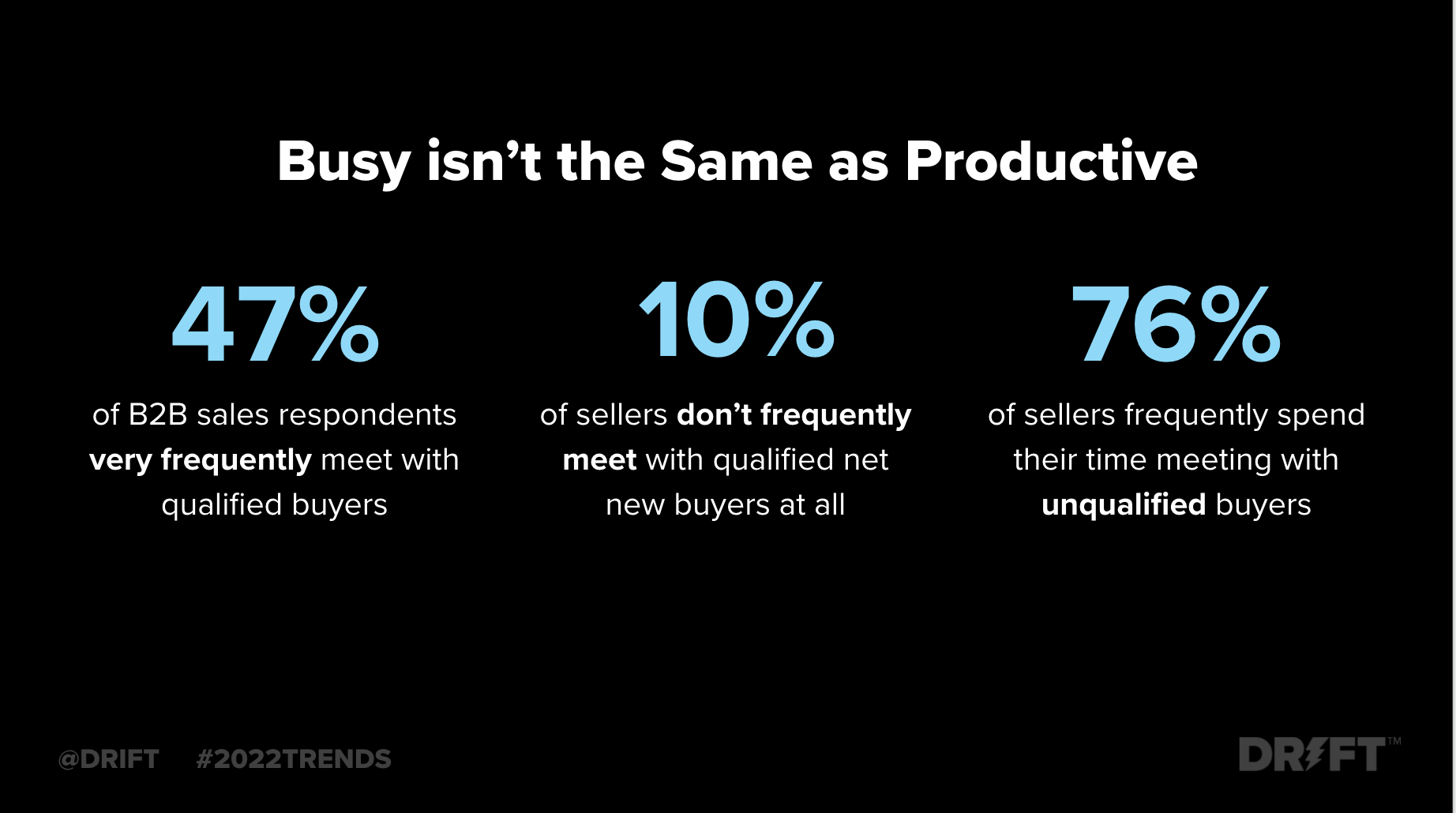
Are your sales teams actually selling? 76% of sellers frequently spend their time meeting with unqualified buyers. And less than half very frequently meet with qualified ones.
One of marketing’s jobs is to make your sales teams more productive. That starts with:
- A “day in the life” audit so you understand what they’re doing and whether or not your teams match these terrifying stats above
- Finding automation opportunities so they can take data entry and other manual tasks off their plate
- Investing in teaching and enablement on what qualified buyers look like, from how to adapt the sales process to each one
Give your sales team the tools they need to spend more time selling and less time being so busy that they can’t even think about their next call.
8. With Great Data Comes Great Responsibility
The way forward with productivity? Data.
But today’s marketers and sellers are drowning in data…and not always the good kind.
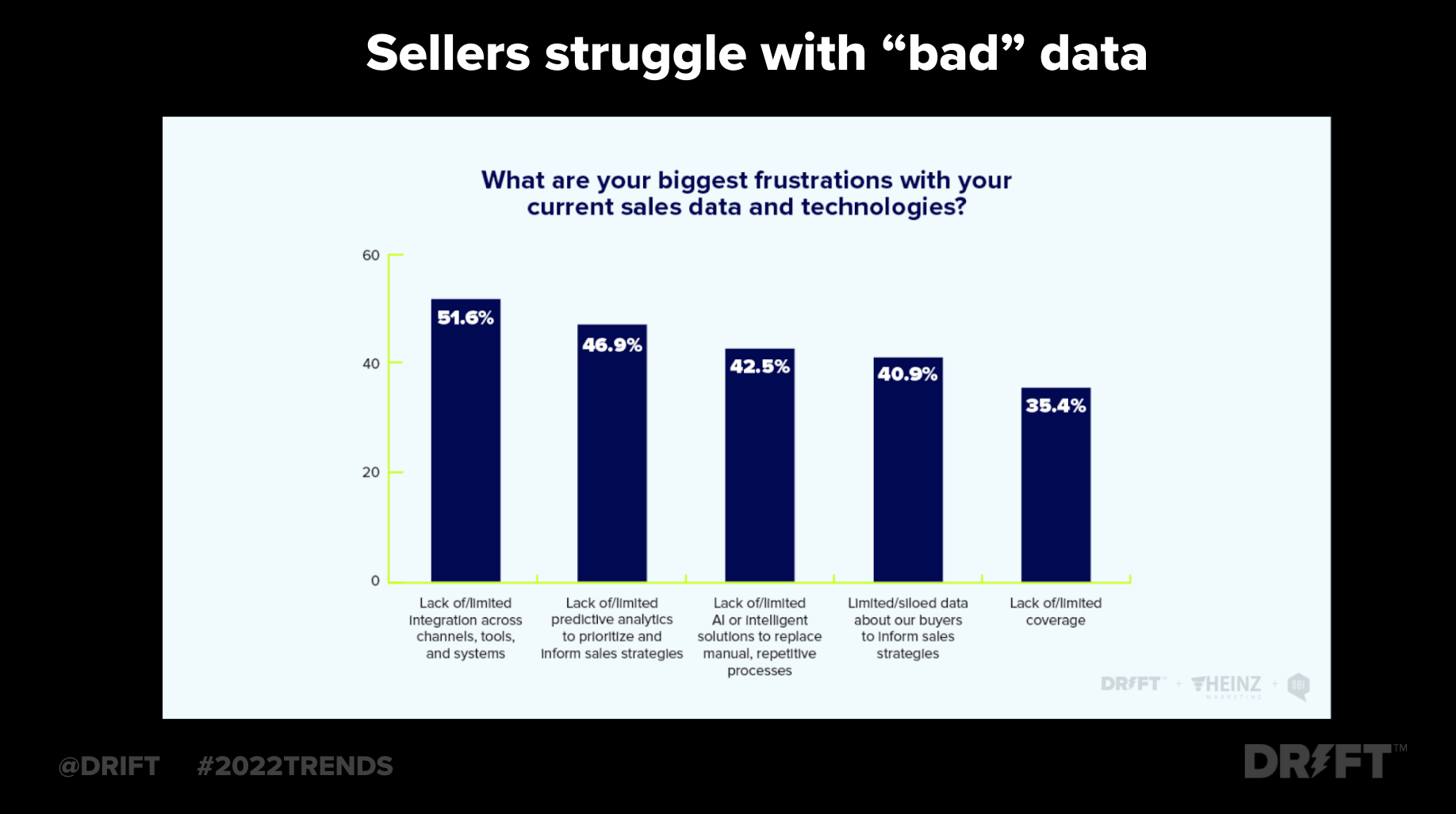
If you’re like most teams (51.6%), you’re probably dealing with multiple databases with data stuck in random tools or channels that don’t integrate with one another. We did a technology audit back at Drift in 2018 and found we were using over 150 tools…sometimes multiple that did the exact same thing.
And that’s just in marketing.
One way to fix bad data is to understand your tech stack more deeply. What are you getting value from? Is it something you’ll continue to use? Do you have multiple tools that do the same thing?
Because the second biggest struggle (46.9%) we saw was the lack of predictive analytics that help connect the dots between systems and provide guidance on the right path forward.
It’s no wonder, then, that marketing isn’t super confident that their current technology stack can meet their needs.
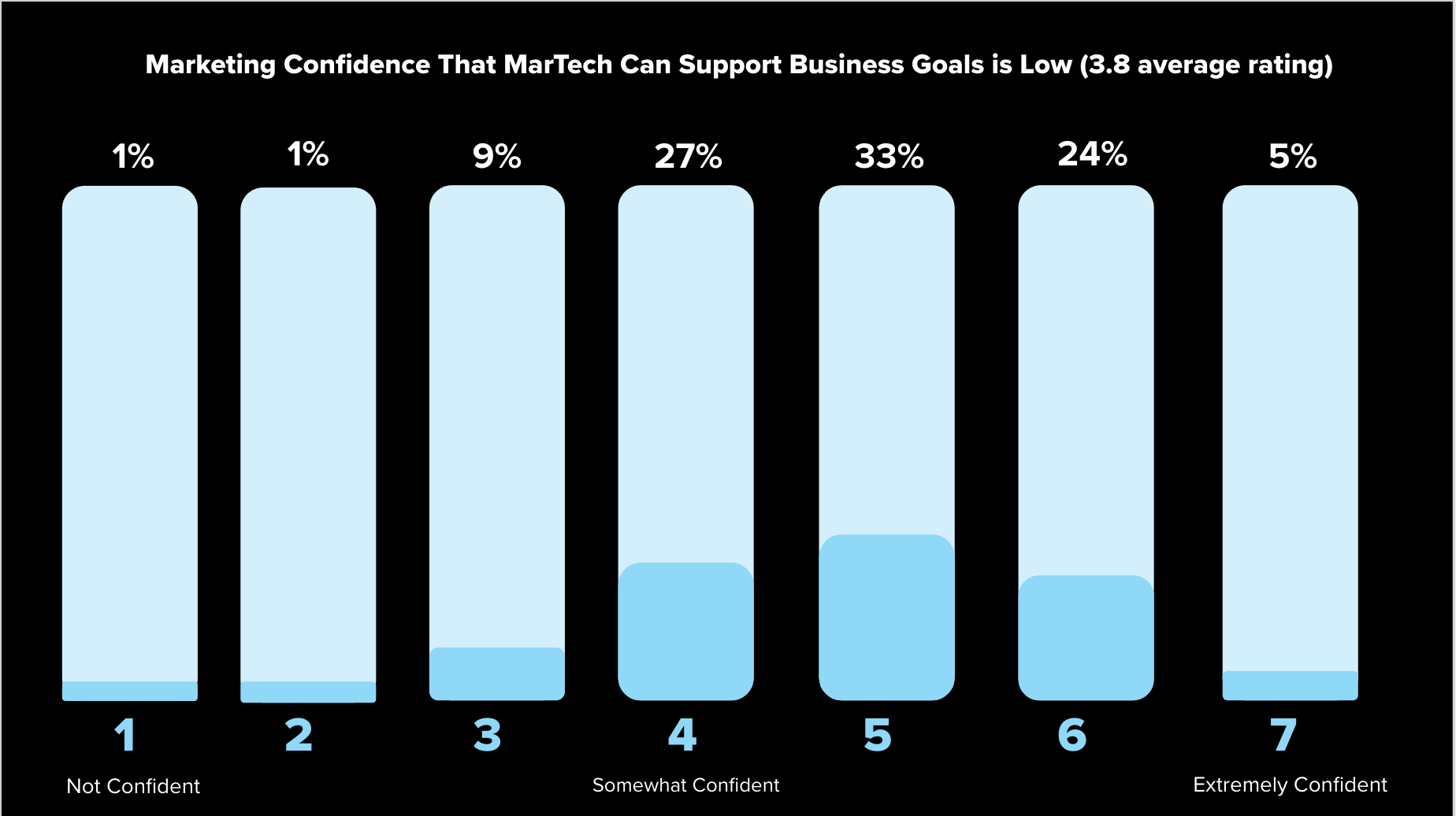
Over the last few years, a lot of marketing technology has only distracted us and created distance between marketers and the buyer — exactly the opposite of what most tools claim to solve. You have to optimize and maintain anything you add to your tech stack so that you’re getting the most out of what it can do, and really evaluate what matters when it comes to your technology in 2022.
9. The Robots Are Coming
No, robots aren’t coming for your jobs. But they are going to take over the boring stuff, not the important stuff.
The more you can automate, the more time you have to focus on the human side of marketing and selling that builds a better experience. Things like…
- Surfacing trending topics or themes across conversations
- Spending more time on high-intent conversations and prioritizing leads
- Enhancing productivity by automating manual tasks
- Forecasting internally and externally more accurately
- Providing 24/7 support to customers without hiring more staff
AI is important because they enable great, personalized experiences at scale. AI and machine learning help sift through those mountains of data to understand where to put your time, money, and energy in a more productive manner, so you can unlock a better buyer experience.
10. GTM Will Look Very Different in 2023
It’s time to change how we think about go-to-market strategy.
81% of people won’t fill out forms anymore. 65% of sellers spend too much time doing non-revenue generating activities. And 59% of customers will drop you after one bad experience.
The stakes are high, and only getting higher.

The new GTM requires an integrated approach between inbound and outbound motions. You can’t rely on just one method of driving sales — you have to blend both, engaging customers and buyers when and how they want.
That’s what’s going to win in 2022 and beyond.











